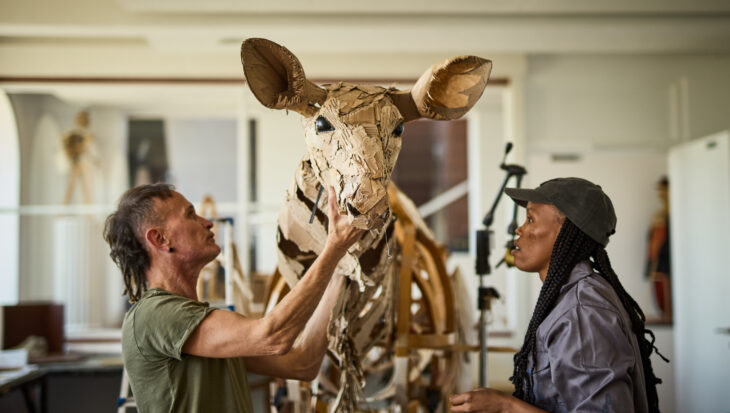‘The Herds’ will be arriving in London this Friday!
Have you heard? A breathtaking arts initiative, ‘The Herds’ will be arriving in London this Friday.
Posted 27 Jun 2025

Posted on the 19th September 2014
These are photographs the racing industry does not want the public to see. They show Wigmore Hall moments after breaking his leg at Doncaster Racecourse, and then being shot in the head by a vet. The images were captured by Animal Aid’s undercover team at the racecourse on Saturday 13 September.
On average, three horses die each week on British racecourses.
Screened off in order to be out of sight from the race-going public in the grandstands, Wigmore Hall’s unceremonious death was brought about by a bullet from a silent pistol. Two minutes earlier, he had shattered a foreleg, racing at full gallop against eight other horses, some three furlongs (660 yards) from the finishing post.
Throughout his short life, seven-year-old Wigmore Hall had been subjected to a demanding regime. In a five-year career he raced consistently each season, totalling 42 races in all. The vast majority of horses who are trained in Britain will rarely race outside of Britain and Ireland. Wigmore Hall’s connections raced him in the USA, Canada, Dubai, Singapore, Hong Kong and France, as well as Britain. He accumulated a huge sum of prize money for his owner Mark Hawtin and connections – it totalled £1,334,814.
The demands on this horse were considerable: crated-up on long haul flights; being required to perform in extreme humidity; racing on different surfaces and ground conditions, and over variable distances, as well as being challenged with a training regime that would have pushed this horse to his limits. Aside from the hustle and bustle of racing against other horses, he was whipped to get the maximum from him both physically and mentally. His last three races came within the space of just four weeks, which gave him minimum recovery time. Wigmore Hall eventually paid the price with his life.
More than 1,000 race horses have lost their lives on British courses since March 2007. The vast majority will not have their story made public. Behind a veil of secrecy the racing industry, under the regulation of the British Horseracing Authority, resolutely refuses to name race horses who are destroyed on racecourses or who disappear after their racing careers are over – and some before they even begin. Their fates are kept from the public.
However, through meticulous research and regular racecourse attendance Animal Aid manages to name many who have met a premature death on British racecourses. Their details are recorded on Animal Aid’s dedicated website: Race Horse Deathwatch
Says Dene Stansall, Animal Aid’s Horse Racing Consultant:
‘The racing industry should be ashamed of its track record. Poor Wigmore Hall was one of a huge number of race horses who are destroyed each year because they’re pushed too hard on the racecourse or are poor commercial prospects. His death is yet more evidence that commercial horse racing is a pitiless so-call sport that deserves not a shred of public support.’
Have you heard? A breathtaking arts initiative, ‘The Herds’ will be arriving in London this Friday.
Posted 27 Jun 2025

As the greyhound racing industry releases its annual data on the number of dogs’ deaths, a raft of well-known names - alongside their canine friends - has called upon the Government to end greyhound racing....
Posted 26 Jun 2025
